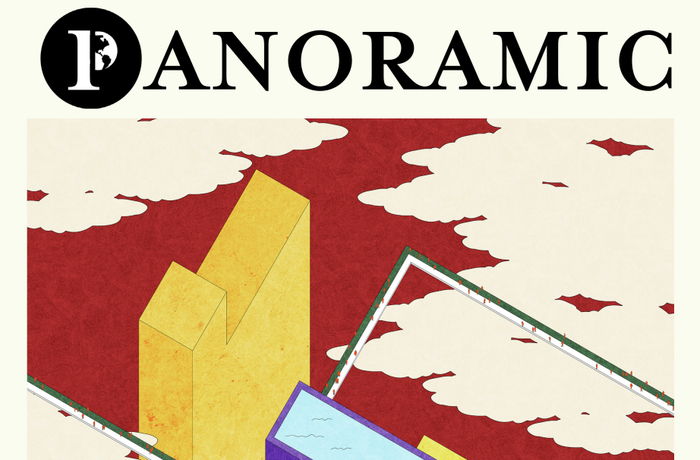‘Love Art After Dark’ took place on March 17th. The sun still blazed through the backdrop of Trumpington Street as visitors streamed into the entrance of the Fitzwilliam Museum. Greeted by the drumming group ‘Os Surdinhos’, emphatically playing to the beat of Gwen Stefani’s ‘Hollaback Girl’, the evening promised to be uplifting. The Fitzwilliam Museum itself as a location is unrivalled; the infamous glass dome was particularly stunning to see at night, with stars peaking through. Zine stalls were stationed amongst the artefacts, blending into the style of the museum itself which is an amalgamation of differently sized shapes and spaces each with a unique focus, and curators accompanied groups as you progressed through the highlighted galleries on your way around. Small activities were interspersed throughout, providing moments of fun amongst the historic displays.

The zine market appeared to be the main social hub of the event: zine committees assembled and their tables adorned with brand new editions and merchandise. Features included long-established zines such as Notes, which sold a ‘Love Art After Dark’ themed edition, and BAIT, having recently come out with their thirteenth iteration. Alongside these included the recently established and published Catharsis (its first theme being ‘Matter’) and the burgeoning Nefarious. Alongside zines, postcards and tote bags (of course) were sold, the Fitzwilliam Museum Society’s own stall advocating membership. Situated near the bar and a DJ, the courtyard was transformed into a delightful, mercantile space for chatter and artistic appreciation.

Leaving the courtyard, you were invited to craft with the Catharsis team, an interesting contrast to the armoury in which the table was placed. Whilst fun and inventive, the space certainly could have been used more creatively. Upstairs in the Italian Gallery stationed the Blackbirds Poetry Society, who provided materials for poetry writing. Though these activities were fun and playful, there was a certain sparseness to the event which I didn’t expect. With such a grand location, more of a buzz was expected, however, most attendees seemed at peace with the opportunity to browse the Fitzwilliam. The different areas could have been better indicated – many of the talks advertised seemed interesting, but with little visual aids around the museum, it was difficult to access certain parts of the event, and little knowledge of the talks available seemed present.

ChuJazz at the Founder’s Entrance was welcome entertainment. The space itself is fascinating, but the striking visuals were enhanced by the jazz music that drifted through the galleries and bounced off the portraits, at times blending with the echoed voices of poetry readings, to create a tapestry of sound throughout the space. Museum’s are normally a silent affair, at a complete distance from the bustling and lively atmosphere created here – here it came alive with the chatter of groups, partnering well with the vibrancy that Hockney has brought to the space. There was some disappointment that there was only one zine or society that had organised poetry readings. With the success of recent open mic nights by organisations such as Screeve and Queen’s Arts Festival, it was a surprise that the event did not utilise any of the museum’s enclaves in the same way.

It was a wonderful idea for workshops to be put on, to give guests the opportunity to flex their own creative muscles in both this and the FMS x Girl Talk Collage event, inspired by the creative hubbub of the night. Other events could have benefited from being more structured workshops like this, such as the aforementioned poetry writing. While the concept of the freedom of walking around and writing your own poetry is lovely, a structure and prompts would have bolstered the engagement with it.

However, the poetry readings held by Notes was a lovely affair, and, due to the edition having been designed for this event, the merging of poetry and art felt wonderfully placed, to the extent that one reading occurred below the painting it described, and the audience were invited to examine the painting while the reading occurred; the audience engaged with an immediate and unrivalled experience of ekphrasis. The audience were also invited to participate in the readings, and this continued the sense of creative community the wider event was focused on fostering.

A staple activity for the arts scene was a feature – life drawing, taking place in the Seminar Room. This was the first experience of life drawing for Anna, and was highly enjoyable. In this context there felt like there was no pressure, no stresses of high-art skill, and generally a very relaxed and communal atmosphere extending from the rest of the event into the workshop space. For newcomers like Anna though, perhaps a slight introduction would have been of benefit, rather than directly launching into the first timed sketch. It was also a pre-book only event, which meant that unlike other activities, participation had to be pre-planned – taking away from the otherwise intuitive interactivity of the museum in general.

Panoramic magazine review
The opportunity to walk around the museum in the evening, surrounded by vibrant discussion of art, allowed a unique encounter with the space even for those who are frequent visitors. It drew many students through the Fitzwilliam doors, giving an exposure to the magnificent space and artistic culture in general – transforming the museum into something effervescent, communal and warm. Creating a space that welcomed and inspired artistic discussion, engagement and inspiration.
Varsity would like to thank the FMS committee, who kindly provided tickets to one of the reviewers for the purpose of this article.


